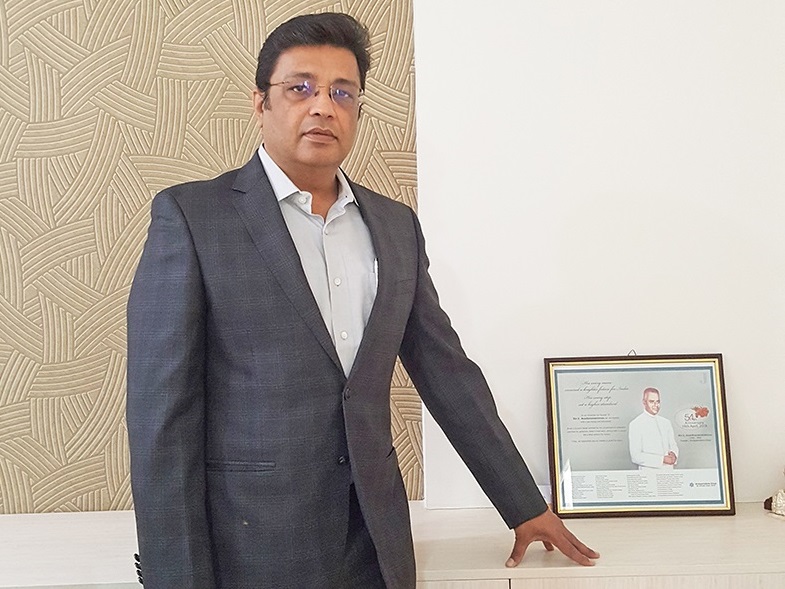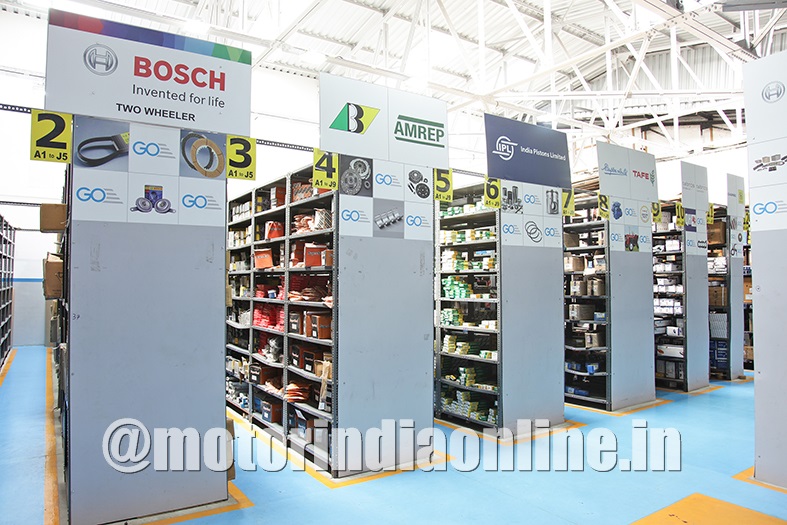When a customer or a mechanic knows that an aftermarket product is represented by George Oakes, part of the Amalgamations Group, he buys it with confidence and doubtless trust. That is the type of legacy George Oakes has built over the past 75 years.

One of the most trusted and reputed names in the aftermarket trade in the country, the company manages nearly 20 top brands, including the likes of Bosch, Rane Brake Lining, Delphi, TAFE, India Pistons, Gabriel, Talbros, Superseals and Simpson, and genuine parts from Tata Motors and Mahindra.
“Our legacy, adhering to compelling ethics in business and our massive customer base – these are the three cornerstones for our company’s success”, said Mr. Krishna Kaushik, CEO, George Oakes Ltd., with subtle confidence during his interaction with MOTORINDIA.
Addressing challenges
Soon after the implementation of GST in July 2017, the aftermarket sector seized to be a trading market and converted into a consumption market. Garages have started to prefer having a leaner stock which has had a direct impact on the distribution channel from the manufacturer to the dealers and service stations.
According to Mr. Kaushik, the current sales trend in the aftermarket, especially in the South, has not shown any upward trend as it did during October and November of the last financial year. “We are seeing a moderate growth of 8 per cent or even lesser, compared to over 10 per cent towards the end of the calendar year 2018, so the market recovery is a challenge. At George Oakes, we want to sell and participate more in the market and do better than the industry growth”, he stated.
Like any forward-looking company, George Oakes is aggressively working on expanding the exposure of its brands, pricing its products competitively and increasing width of coverage, though these are quite challenging in today’s scenario.
On the other hand, the company is at a crossroads, like most other aftermarket distributors, due to the competition between the OES from vehicle manufacturers and the independent part manufacturers.
In Mr. Kaushik’s opinion, there has been an increase in sales of OES parts due to the rising awareness of the importance of vehicle maintenance. Though the quality and prices do not differ much among the OES and independent parts suppliers, the vehicle manufacturers can provide customers a ‘bumper-to-bumper’ solution by offering parts for the whole range of products, including engine components, brakes, transmissions, lubricants and even the electricals and in the process cross incentivise in the categories, something which the independent suppliers might not be able to achieve that easily.
Shrinking aftermarket window
The life span of a commercial vehicle is usually seven or eight years. Mr. Kaushik analysed the time-frame available for aftermarket companies to cater to the customer, taking into account the period for which the vehicle remains under the control of the OEM. Explaining it with a sketch on paper, the CEO stated: “The doubling of warranty by the vehicle manufacturers has taken the warranty period up to 36 months which brings down the eight-year period to five years. Also, after the transition from BS-III to BS-IV, the vehicle manufacturer has been offering customer-friendly packages such as refurbished engines, extended warranty and annual maintenance contract (AMC) which again brings the available time span to four years.”
He added: “These four years is when the vehicle owner jumps into the aftermarket, where again the vehicle, for at least the first three years, is taken care of by the OES which come with aggressive pricing and attractive schemes to woo the customer who would eventually prefer low-cost maintenance and components during the last year or two before selling the vehicle.”
Despite the shrinking time-frame available for aftermarket companies to support vehicles, Mr. Kaushik pointed to an inherent opportunity in their favour: “The vehicle manufacturers might not have the required number of service stations for servicing and maintaining all the vehicles on road which is where the independent aftermarket plays a crucial role. Knowing how to make use of the opportunity is important. With older vehicles still present on the road, service workshops should be equipped to cater to both the new models and the older ones.”
Upcoming trends
With the upcoming transition to BS-VI by 2020, Mr. Kaushik thinks the need of the hour is to invest in technology and to understand how to utilise the technology to accommodate the new emission norms.
“Using technology to involve the mechanics in the service stations and educating them on the various changes in the transition could be an important trend. Another trend could be the emergence of huge organised retailing in Class A cities in the country featuring ‘In & Out’ stores as in Europe which offer bumper-to-bumper solutions”, he said.
E-retailing is another buzzword in the spareparts trade, one which Mr. Kaushik opines would become even more popular in the coming years: “For the aftermarket, as technology grows, the mechanics will start using e-retailing more and more. Since vehicle owners are oblivious to the serial numbers of parts and accessories, the garages would adapt this trend a lot more in future. The upcoming generation will definitely see a rise in e-retailing in the aftermarket sector.”
Another major change in the aftermarket, primarily due to the implementation of GST, is the diminishing layer of middlemen and wholesalers. This is a change that paves way for another possible trend – just like in the European or the American market where a vehicle goes straight to the service station from the distributor, the concept of retailers might fade away and give birth to a whole new trend in the Indian auto aftermarket.
Going forward, at George Oakes, we would be working on the following areas: Increase our geographic range beyond South and West India, increase our basket of product and service offerings, and invest in technology to make the user buying experience better and quicker.
